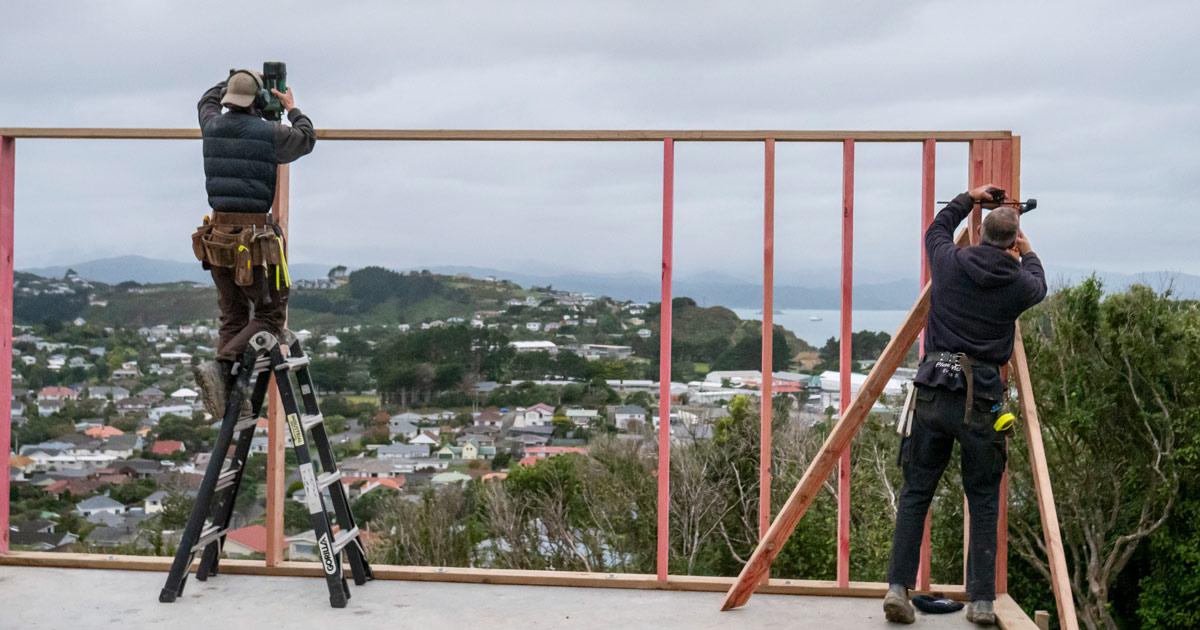Defining supervision in relation to LBPS
16 Sep 2024, LBP & Regulation, Learn, Prove Your Know How

Undertaking supervision is an important role and it is important all LBPs consider the practical and legal implications of performing this function
The Building Act 2004 in section 7, defines what it means to ‘supervise’ building work:
Supervise, in relation to building work, means provide control or direction and oversight of the building work to an extent that is sufficient to ensure that the building work:
- is performed competently; and
- complies with the building consent under which it is carried out.
Only Licensed Building Practitioners (LBPs) can supervise Restricted Building Work (RBW), and only that which they are licensed to carry out themselves. For example, an LBP with a carpentry licence can supervise non-LBPs doing carpentry RBW but cannot supervise a non-LBP doing blocklaying RBW.
Can an LBP supervise another LBP?
An LBP cannot supervise another LBP undertaking work in the same licence class. LBPs are legally entitled to carry out RBW and are always individually accountable for the work they themselves produce. The LBP who completes RBW must also be the one who completes a Record of Work afterwards.
Different types of supervision
There are three different types of supervision – direct, general and remote. The supervising LBP needs to consider both the work being done and who is carrying it out to be able to gauge the level of direction and control necessary – it is important to remember that the LBP supervising RBW is accountable for that work and must complete a Record of Work.
Complex tasks involving risky details being undertaken by low or semi-skilled workers require direct supervision or working one-on-one with them. An example of this might be an apprentice installing weatherboards for the first time.
However, if the person doing the work has previously demonstrated the ability to perform the task with limited supervision, then general supervision may be adopted – with the supervising LBP working in a different area on the same site but periodically checking the work as it proceeds.
Remote supervision could be used when an LBP knows that the non- licensed workers carrying out RBW on a different site are highly skilled. It is important the LBP identifies specific tasks when he or she needs to be onsite to provide direction or oversight even when they can’t be there constantly due to running more than one job at that time. With remote supervision, good lines of communication must be available so that advice and assistance can be offered when and where required.
Design supervision
When a new graduate is undertaking Design RBW, direct or general supervision would probably be used when the design LBP is working in the same office.
Where a competent but unlicensed designer who is well known to the supervising LBP works in a different office, remote supervision would be appropriate and would be provided primarily by phone or email. As the supervising LBP is going to be providing a statement about the Building Code in their certificate of work (CoW), dialogue with the non- LBP throughout the design process is essential.
Records and certificates of work
It is crucial that the LBP accurately completes their Record of Work or CoW, outlining what work was carried out or supervised – there is plenty of space to do this on the form. These forms will be held at the council for the life of the building they relate to, therefore having an accurate record is in the best interests of the LBP. You are unlikely to remember what you did on a particular job years from now, so accuracy is important.
Site licences
Though not directly linked to carrying out or supervising RBW, the Site licence is a critical part of the overall scheme. Holders of a Site licence are practitioners, who are recognised as possessing specific skills that relate to coordination, oversight, organisation and managing building projects. The Site licence is an indicator that you have the skills to manage personnel and provide technical site supervision within the scope of your licence. The
Site licence holder undertakes supervision of general building work, rather than the supervision of unlicensed people undertaking RBW.
What does poor supervision look like?
Poor supervision can involve poor onsite health and safety records, disorganised and untidy sites, little or no quality assurance, poor sequencing resulting in rescheduling of work, missed milestones or handover targets, or disgruntled staff or clients. It can result in failed building inspections, poor quality workmanship, and re-work – all of which are going to reflect badly on the supervising LBP. It is an offence to supervise in a negligent or incompetent manner, and you could be held to account.
Good supervision
Good supervision requires a solid understanding of your co-workers’ skills and the complexity of work being performed, alongside the right mix of control, direction and oversight.
Just being licensed does not mean you are capable of supervising non-LBPs carrying out RBW. It may be difficult for newly licensed practitioner with only a few years’ experience to supervise a non- licensed tradesperson with 40 years’ experience.
It all comes down to competence and not being afraid to say: “I need more experience before I can competently do that”.
The above is taken from the Practice Note on supervision.
This article is an excerpt from Codewords Issue 115 and has been published verbatim. As such, neither PlaceMakers nor Under Construction magazine’s publishers take responsibility for the accuracy of the article or its corresponding questions.
Reading Codewords articles that are relevant to your licence class is a mandatory requirement for Licensed Building Practitioners. These questions can be answered through the LBP portal, online on the Under Construction website or recorded on the magazine, then provided at the time of renewal.
Register to earn LBP Points Sign in
1 Comment
Leave a Reply
You must be logged in to post a comment.




great